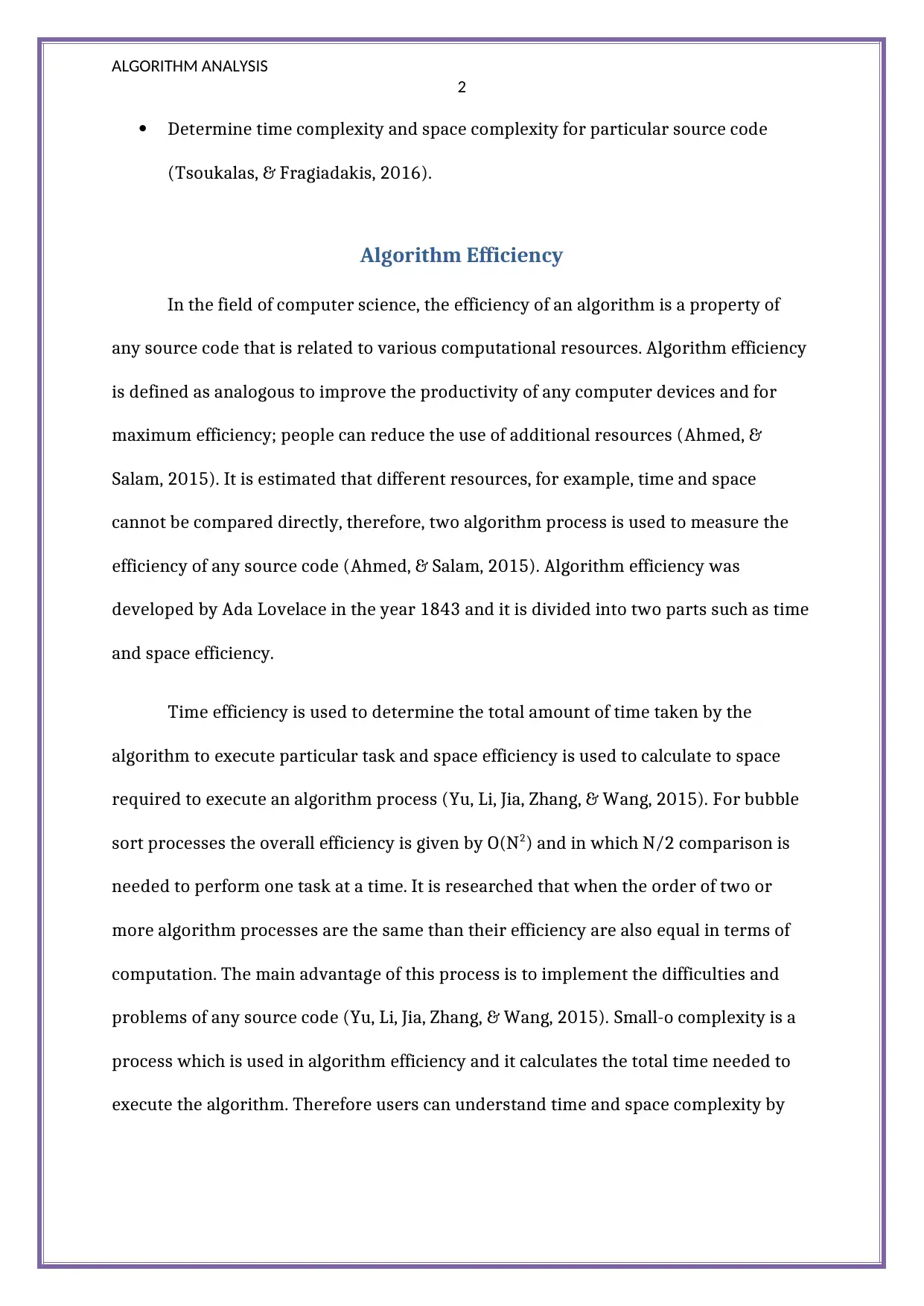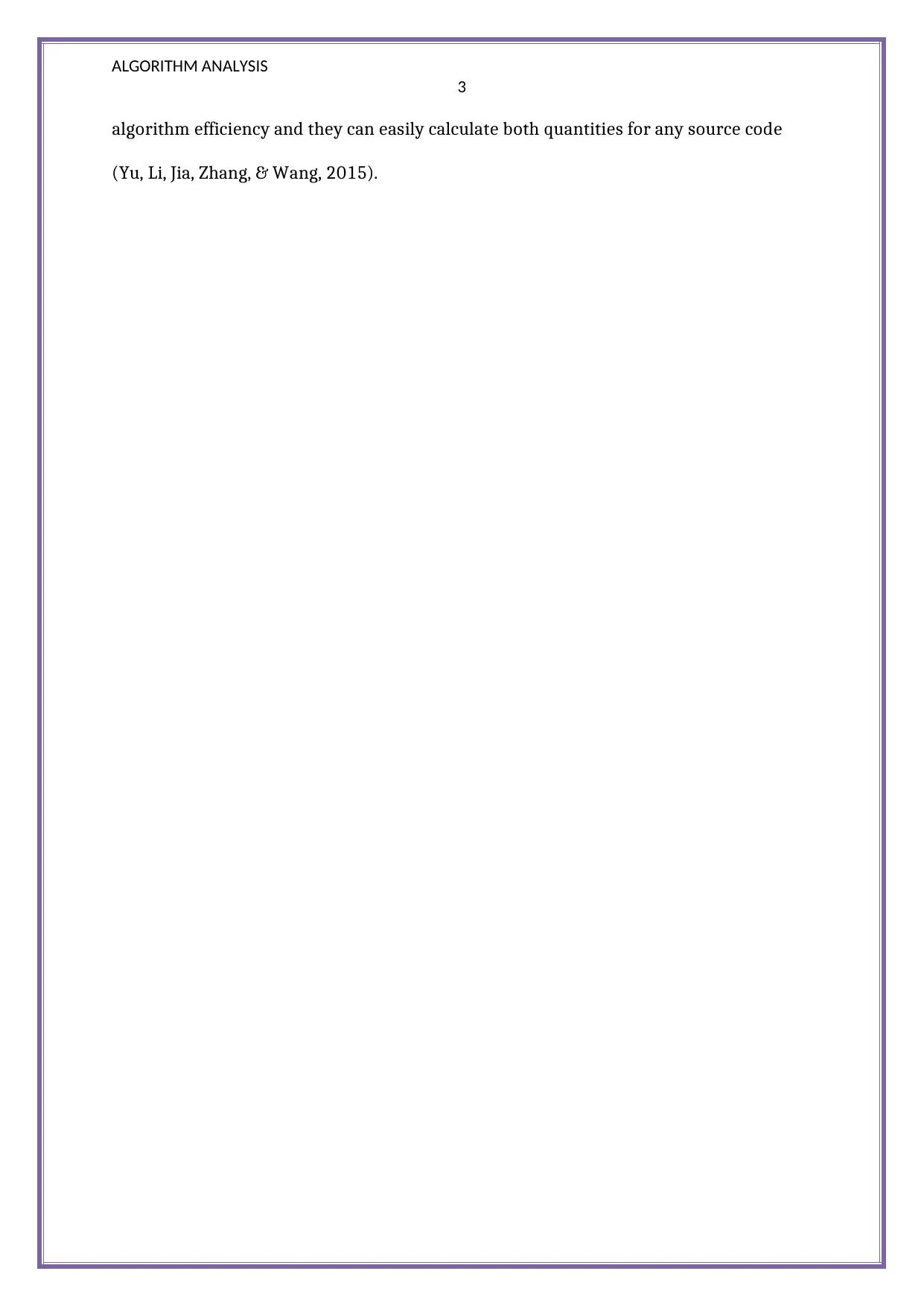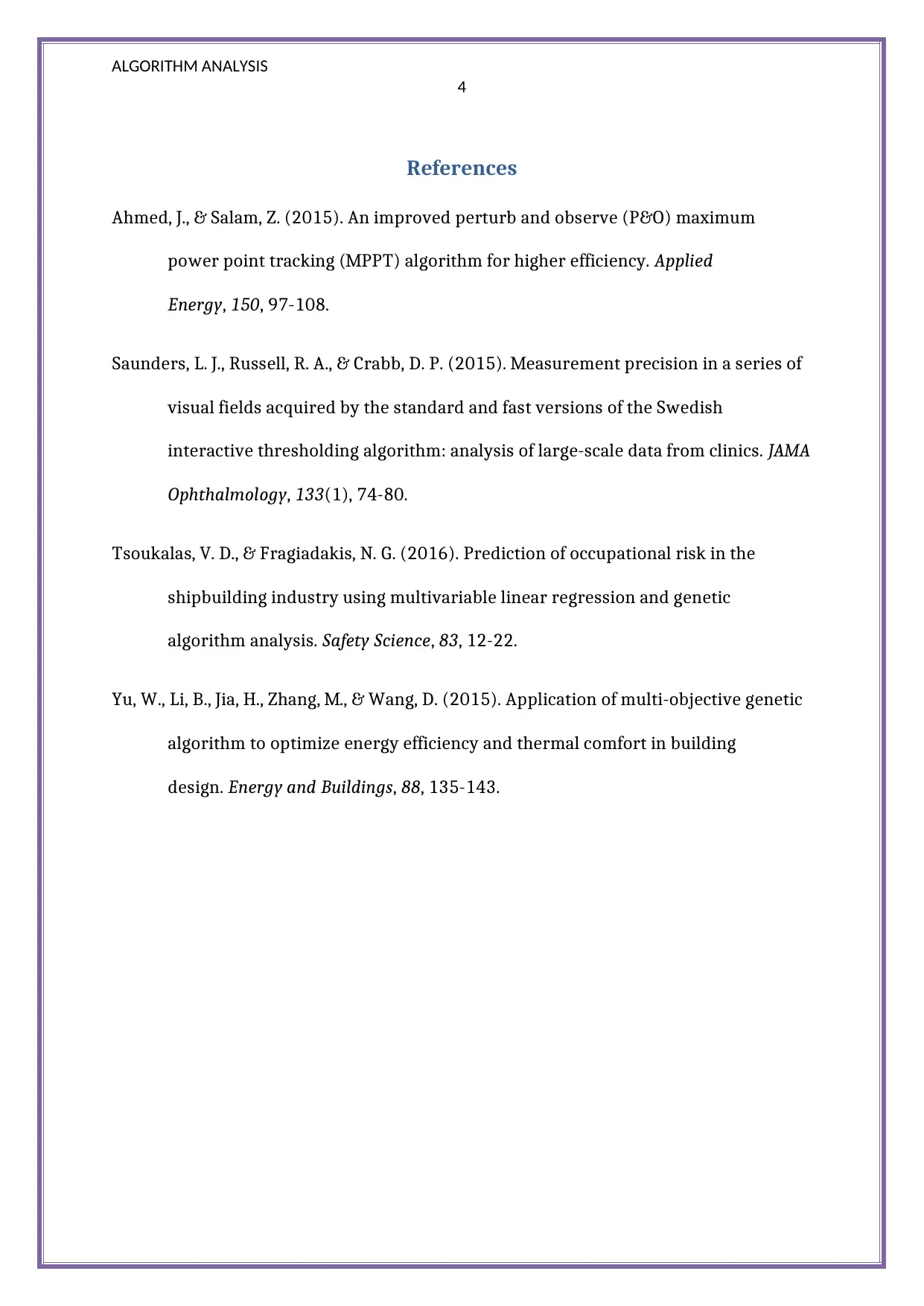Algorithm Analysis: Understanding Efficiency and Complexity Concepts
VerifiedAdded on 2023/06/07
|5
|868
|453
Homework Assignment
AI Summary
This homework assignment delves into the core concepts of algorithm analysis, a critical component of computer science. The paper begins with a definition of algorithm analysis, emphasizing its role in providing theoretical estimations for algorithms and its application in solving computational problems. It explores time and space complexity, explaining how these measurements are used to assess the resources required by an algorithm. The assignment discusses the significance of algorithm efficiency, highlighting the importance of minimizing both time and space complexity. Various notations, such as Big O, Big Theta, and Big Omega are mentioned as tools for measuring complexity. The paper also touches upon the steps involved in a complete algorithm analysis process, including implementation, time measurement, and the production of a realistic system for input signals. Furthermore, the assignment explores algorithm efficiency, defining it in relation to computational resources and the concept of time and space efficiency. Finally, the paper discusses the efficiency of bubble sort processes and the application of small-o complexity.
1 out of 5










![[object Object]](/_next/static/media/star-bottom.7253800d.svg)